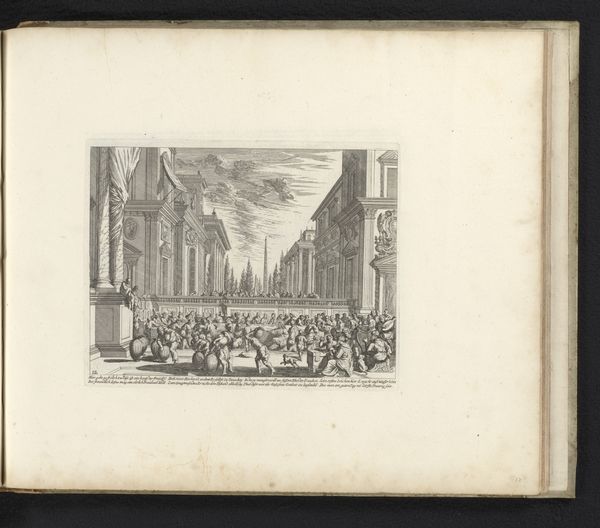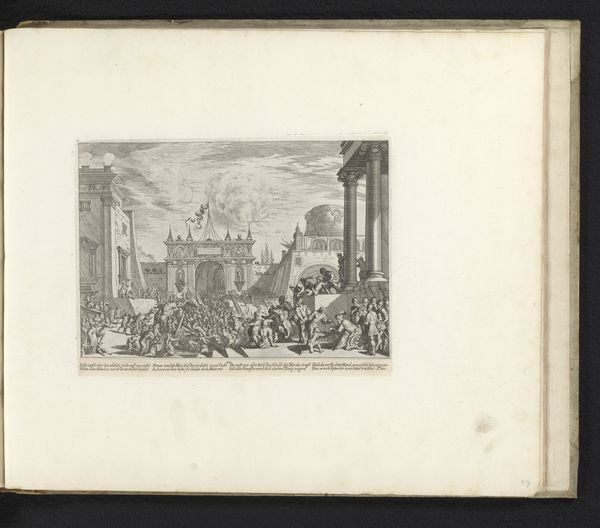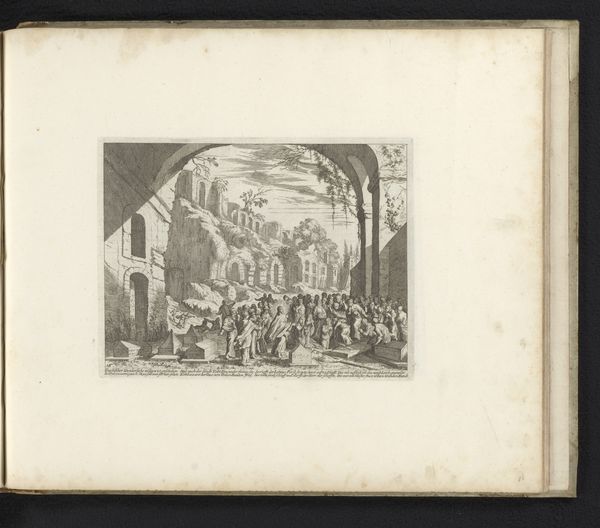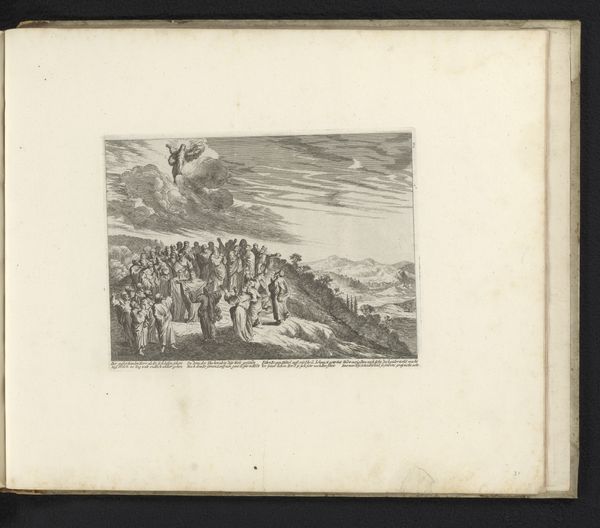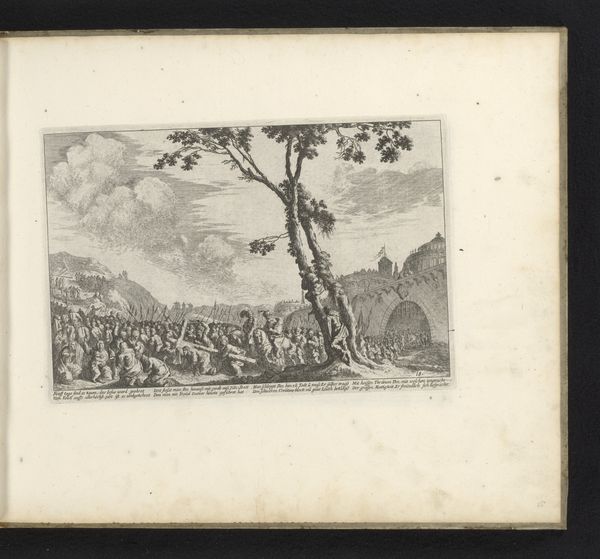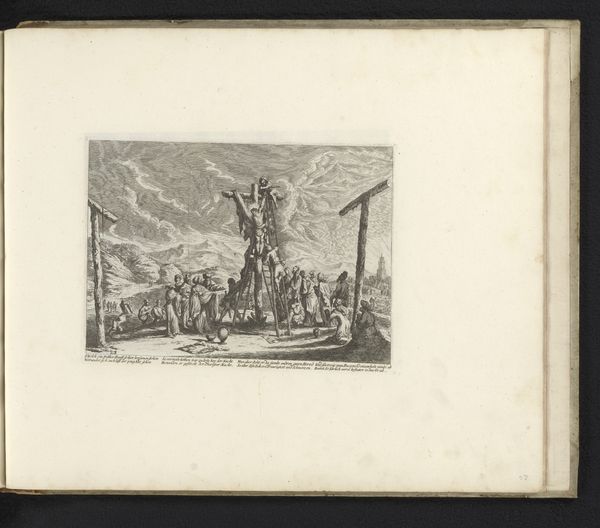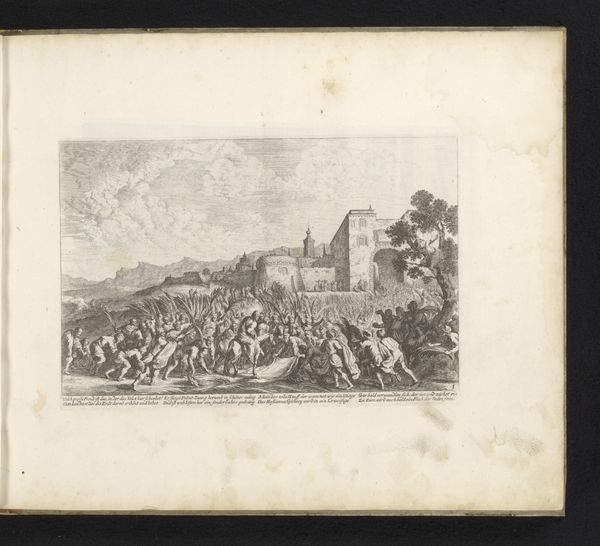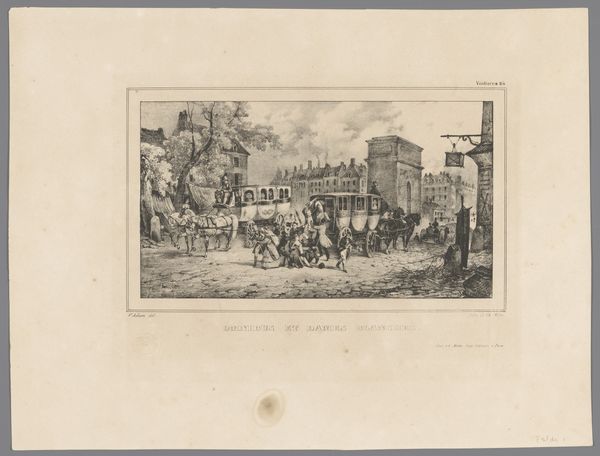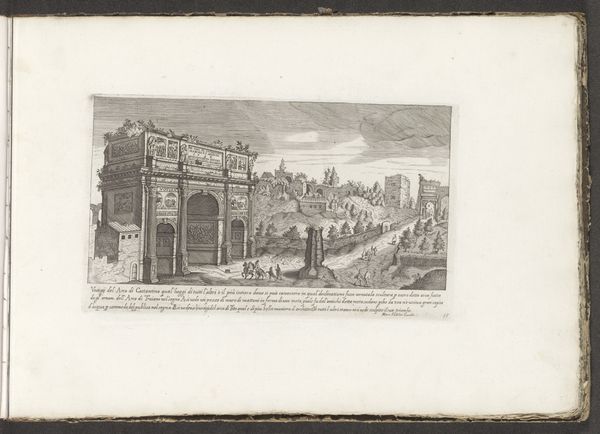
print, engraving
#
baroque
# print
#
cityscape
#
history-painting
#
engraving
Dimensions: height 171 mm, width 251 mm
Copyright: Rijks Museum: Open Domain
Curator: This is Melchior Küsel's "Pilatus wast zijn handen in onschuld," an engraving dating from 1670 to 1682. Editor: My first impression? There is a sense of foreboding and theatrical drama in how he has staged the crowd scene and city buildings beneath such a tempestuous sky. Curator: Absolutely. The landscape contributes to the painting's iconographic narrative, and acts like a visual warning that anticipates impending doom, or catastrophe in the city in the background. In that regard, the overcast sky reinforces themes of judgement and moral reckoning that the engraving invokes. Editor: It's compelling how Küsel situates Pontius Pilate, a figure of colonial Roman authority, as essentially deferring judgement to the will of the crowd. By washing his hands, Pilate abdicates personal responsibility and arguably implicates the masses in the act of condemnation. How can a scene from biblical times be interpreted through the prism of collective agency, coercion, and mob mentality? Curator: Right. But it is more than that too! The detail in depicting Pilate's action isn't merely about washing away responsibility. This particular pose and performative gesture becomes an allegorical assertion of purported innocence within the spectacle of injustice. The symbol remains potent because it represents the complexities and contradictions in human decision-making throughout the historical narrative. Editor: But, considering our contemporary sensibilities regarding complicity, could we re-examine this representation of 'innocence'? Is Pilate truly exonerated by this ritual? And who is he trying to persuade anyway? Is it simply his direct audience in the scene, or is Küsel inviting us, as viewers across centuries, to grapple with how leaders distance themselves from the consequences of their inaction, through elaborate self- absolving performances. Curator: Exactly. Küsel challenges the viewer to interpret that symbolism of performative cleansing of sin; is this just symbolic purification, or political escape? The symbolic weight of water is complex too—both purifying and destructive—as an extension of human will and potential moral consequence. Editor: This Baroque artwork does more than simply illustrate a historical scene, it's a prompt to delve deeper into our understanding of complicity and historical responsibility. I see parallels with contemporary political issues everywhere. Curator: Agreed. Looking at the architecture framing the event and at Pilate himself allows a multilayered meditation on moral symbolism to open up even for us today.
Comments
No comments
Be the first to comment and join the conversation on the ultimate creative platform.


